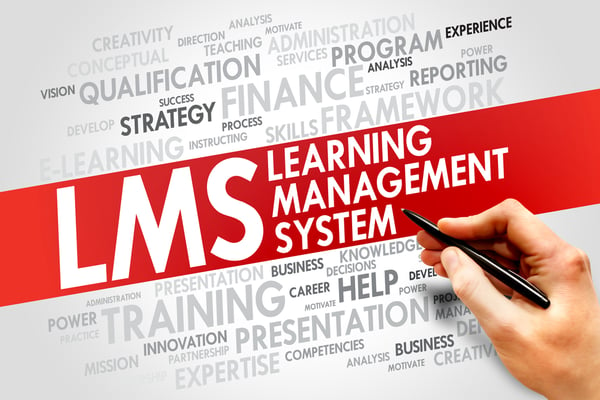Many businesses of all sectors and sizes are investing in a Learning Management System (LMS) to facilitate and manage eLearning within their organization. In this article, we’re sharing the five step process involved in creating a LMS, as well as how long you can expect each step to take you.
LMSs will help your business to develop content to teach and train employees. This learning system can sometimes form part of a Talent Management System, which comprises recruitment, performance management and compensation management too. In this instance, employee recruitment and development is managed seamlessly.

Analyse your needs
LMSs are a way to systematically implement and manage eLearning. As such, there will be factors to be considered.
Start by determining what the goals and needs of your business are. If you are simply using a LMS for onboarding, the features you’ll need will vary from those who also want to include training for employees and partners, for example. Other key feature considerations will be based on tracking and budget, as the bundle you select will need to be compatible and its limitations, if any, need not impact your eLearning experience. Depending on which system you select, other notable features will include:
- Testing and assessments (implementation of gamification and certificates)
- Data based on the results (you can measure and monitor various metrics, including performance rates and the length of time tasks take to complete)
- Responsiveness (The speed at which the content takes to load and whether you can access it from various devices)
- Customization (branding, multiple languages, various forms of content delivery and the possibility of integrating your LMS with other tools you already use, such as HubSpot and G-Suite)
Prepare the LMS structure
Once you know what your needs are, you will need the structure and software to work with. These are the options available to you:
- Cloud-based: With this option, no installation is required. To access the LMS, you’ll simply need an internet connection and login details, which means you can access it on various devices. There are various options available to suit all sorts of budgets, including free options which reduces your start-up costs. Your LMS will be hosted on the provider’s server, so they will handle the maintenance and security, while offering you technical support and ensuring that updates happen automatically. Cloud-based options are generally user-friendly (meaning you won’t need to have an IT employee to manage it) and have additive functionalities available to suit your needs. This option is therefore efficient and affordable (lookout for free trials when shopping around for your LMS vendor).
- Open-source: This option will require installation and setting up. There are various low cost options and free solutions available too, with most pricing models set according to business requirements. Since it's installed, your LMS will be hosted on your own server, giving you more control in terms of ownership, changes and enhancements. There is, however, no access to maintenance, security or support, though there are support forums you can refer to.
Whichever option you select, ensure it matches your needs and consider the use of extra functions carefully. For instance, cutting edge software has AI that can facilitate personalised learning experiences on your LMS, which present the user with favourable formats and personalised recommendations. Other factors of importance include the user interface, which should be intuitive and user friendly. This means the functionality works well, is simple to navigate and aids in creating a cohesive learning experience.
Time: Shop around for an LMS solution to suit your needs. This process will take a few of weeks.
Content development
A feature of good LMSs is a Learning Content Management Systems (LCMS). This is a system used to create and manage the content that will be shared on your LMS. This can be a separate system, or part of your LMS system. It provides more functionality than the standard built-in options when it comes to content. However, one needs to ensure that the solutions you select are compatible and can be integrated, as there can be issues importing this information due to licencing.
Once you have the content, you’ll need to set it out correctly on the LMS. You’ll need to create courses which each have topics, quizzes, materials, schedules and possibly mentors. Other aspects to incorporate will be specific skills testing, attendance, pace setters for certain tasks and assignments for the courses.
Finally, you’ll need to test the system and correct any errors before launching it.
Delivery of the LMS
At this stage, you add employees to the LMS and they begin the training and courses. You will need to measure the scores and progress in order to evaluate the materials and systems. You can also check in with the employees via surveys and polls to measure further.
Support
This stage requires you to provide support to the employees if needs be, as well as to update your system and course material when needed. It will ensure that your LMS stays relevant and useful, thereby ensuring you are able to make the most of your LMS.
The time it takes is really a relative question. Ideally, you want to invest in LMS so that you can save on time and costs in the long run. This will take a couple of months to complete, from assessing your business needs to selecting a solution with all of the appropriate functions, developing the courses and then testing and evaluating them. In the end, LMS will train your employees, making them more productive and skilled, which will inevitably enhance your business.
Ready to launch your LMS?
Chat with us at Nexa and let us help you with yours.
%20(1).png?width=2701&height=607&name=BRC_NEXA_LOGO_WHITE%20(2)%20(1).png)
